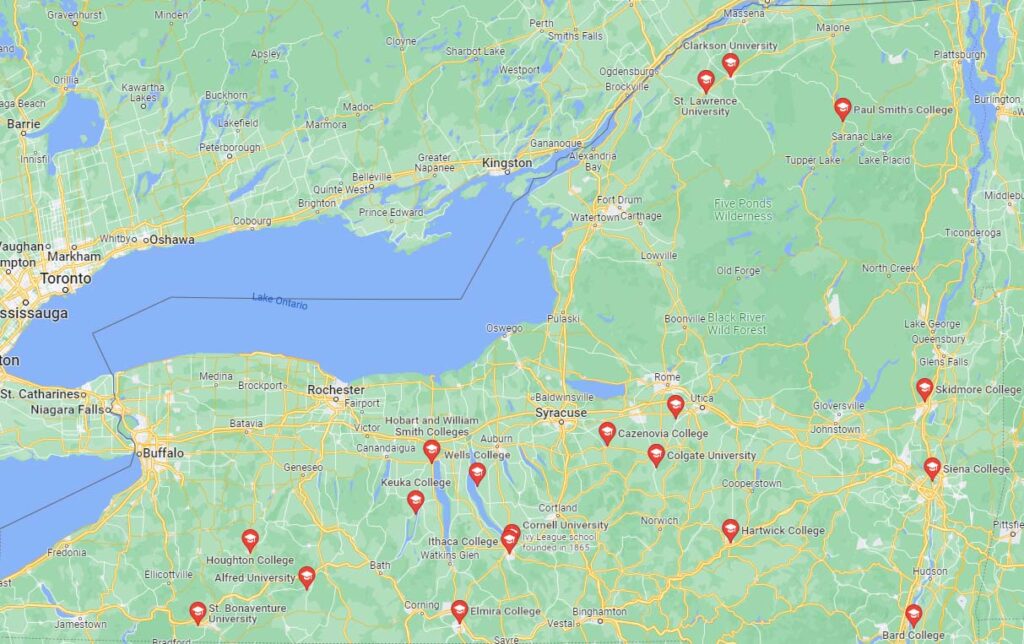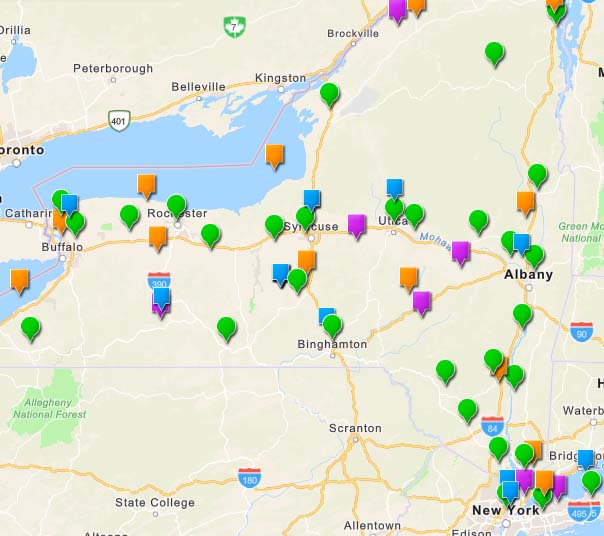College town challenges
Colleges across the country are struggling with declining enrollments, a trend only partly attributable to Covid-19.
As the New York Times recently noted: “The ongoing enrollment crisis at U.S. colleges and universities deepened in spring 2022, raising concerns that a fundamental shift is taking place in attitudes toward the value of a college degree.”
The National Student Clearinghouse Research Center reported in May that the the number of undergraduates in public and private colleges had dropped by 9.4 percent, or nearly 1.4 million, since before the pandemic.
The decline has enormous implications not only for the colleges, but for local economies. While small liberal arts colleges play a diminishing role in higher education, their importance to communities is huge. Rural college towns rely heavily on spending by students, faculty and staff, along with the domino effect of government support.

The map above shows private liberal arts colleges across Upstate New York. It includes Cornell, although Ithaca is a glaring exception among college towns. As a major research university, Cornell receives hundreds of millions of dollars in federal funding.
If we were to overlay a map of grants to small communities with a map of college towns, we would essentially have the same image. This is not only because colleges draw government support; they also attract people with connections to grantors and experience in running nonprofits. Ithaca has a 501(c)(3) for almost every need, interest and activity you can think of, whether it’s educational, agricultural, cultural, environmental or ornithological.
Our map excludes campuses in the SUNY system, which has experienced a 20-percent drop in student enrollment over the last decade. (See map below.) Half of the decline occurred after Covid forced temporary classroom closures in 2020. Many SUNY campuses, such as Geneseo, Fredonia, Potsdam and Delhi, are based in small communities that rely heavily on the economic and cultural boost academic institutions provide.

It’s unlikely that any SUNY colleges will close in the immediate future, although mergers are possible. Gov. Kathy Hochul has called for increasing enrollments and more investment in the system, not only in research and liberal arts schools, but in community and tech colleges.
Small private colleges are in a more precarious position. Their allure as elite institutions for the privileged is fading.
As Paul Neely, former publisher of the Chattanooga Times, has written, even top-tier schools are threatened:
“The danger is that they will go the way of high-end American passenger trains in the late 1940s; they performed exceptionally well, but people began to use automobiles and planes more often. Eventually, the best passenger trains suffered not just because of direct competition for their passengers but because they were isolated.“
The most notable example Upstate is probably Wells College in Aurora, which has struggled for years. Faced with ongoing money troubles, Wells underwent an accreditation review in 2019, and was given a go-ahead for the 2020–21 academic year. Then the pandemic hit, upending the administration’s strategies for financial stability. The accreditation was extended, with a new review scheduled for 2026-2027.
2 Comments
Chris Lavin
Smart piece. My worry is that colleges and universities seem to have a lumbering governance structure that makes change difficult. Some college administrators see these challenges as part of a demographic shift or business cycle. But if it is a paradigm shift like the newspaper industry suffered, colleges may not be nimble enough to react. Certainly newspapers weren’t!
Laurie
Spoken like a guy who used to shovel coal on the Erie Lackawanna.